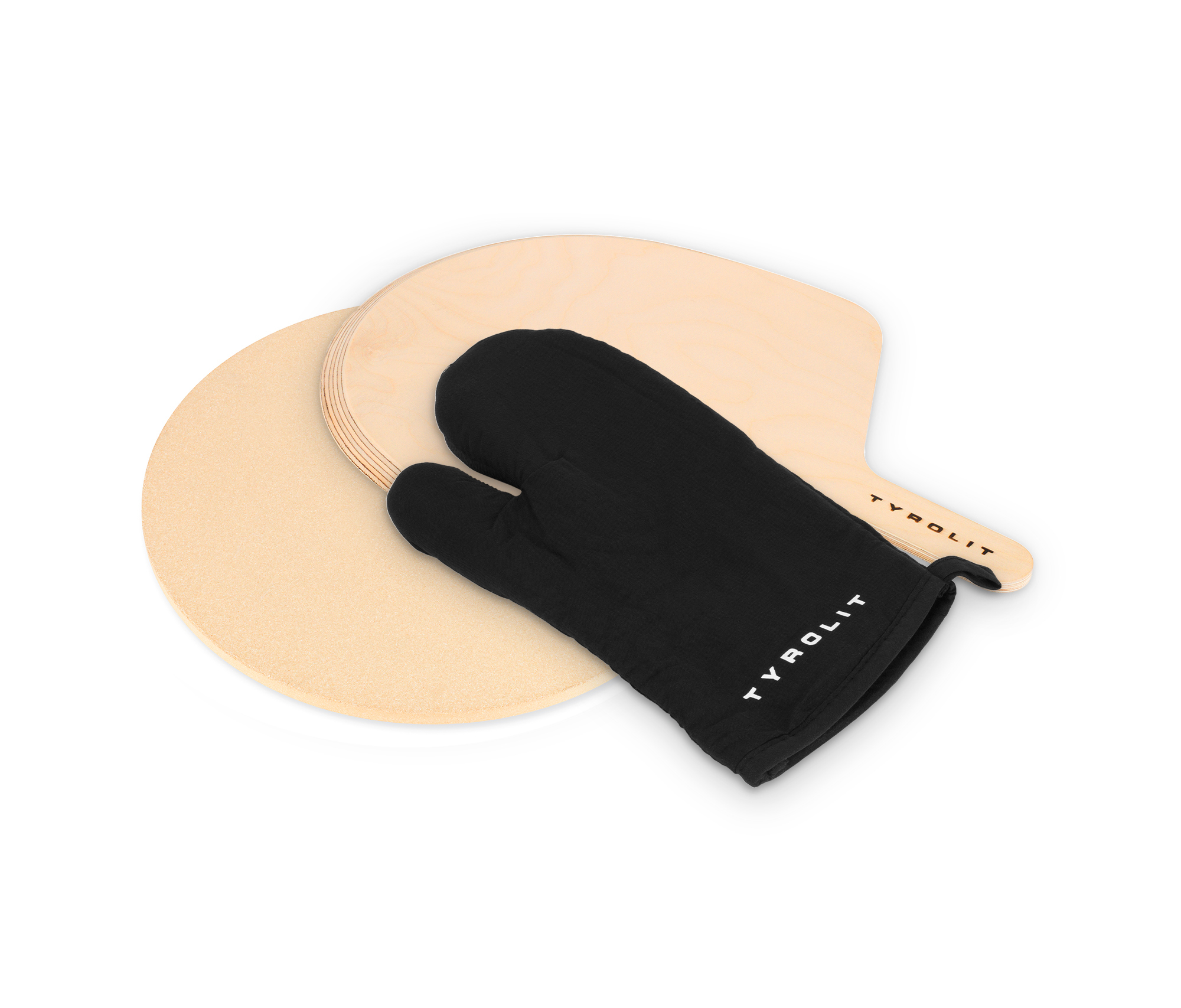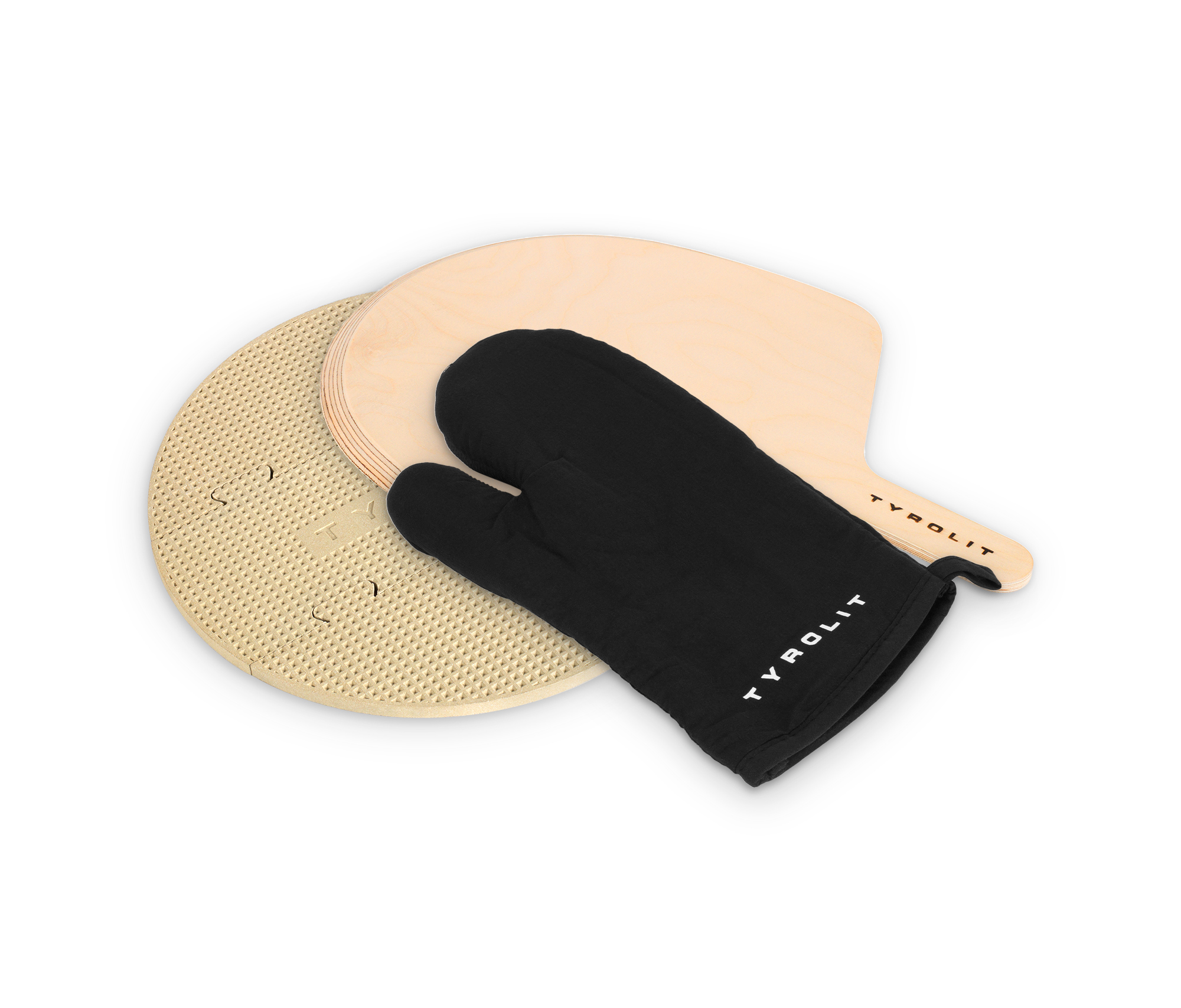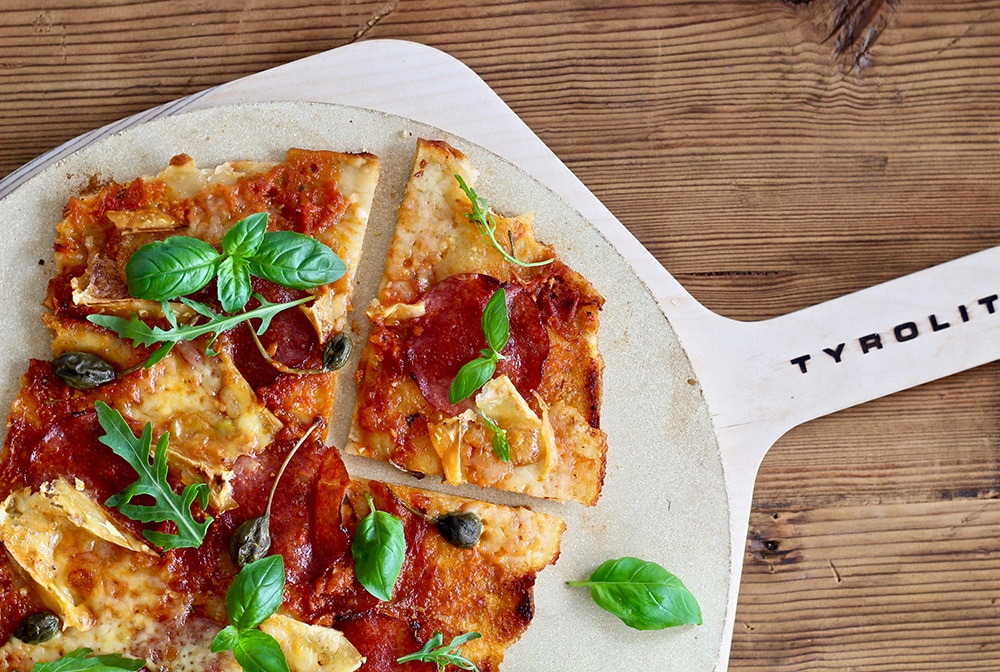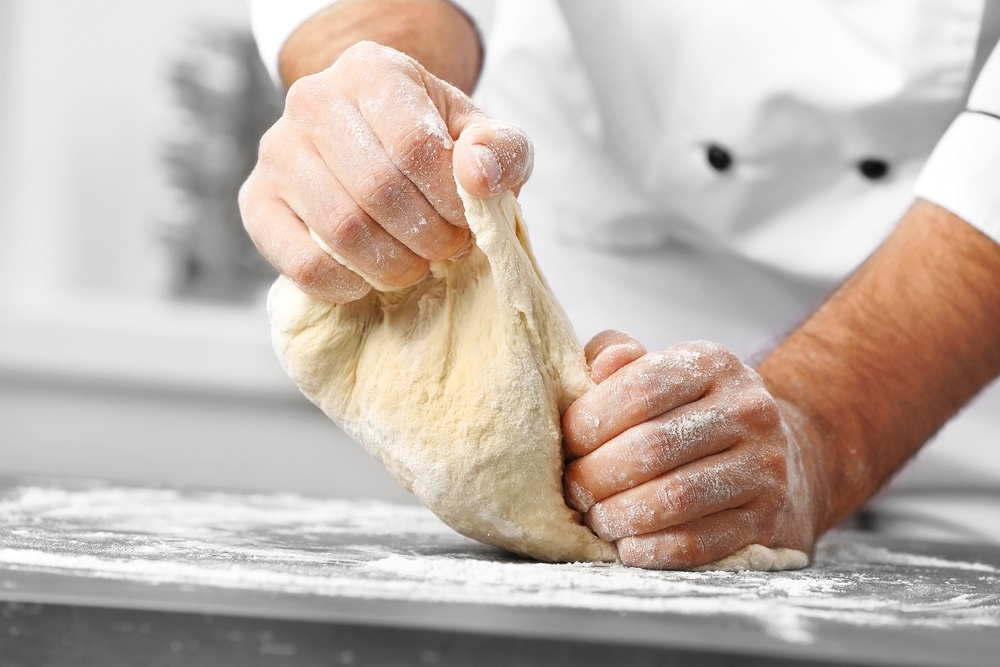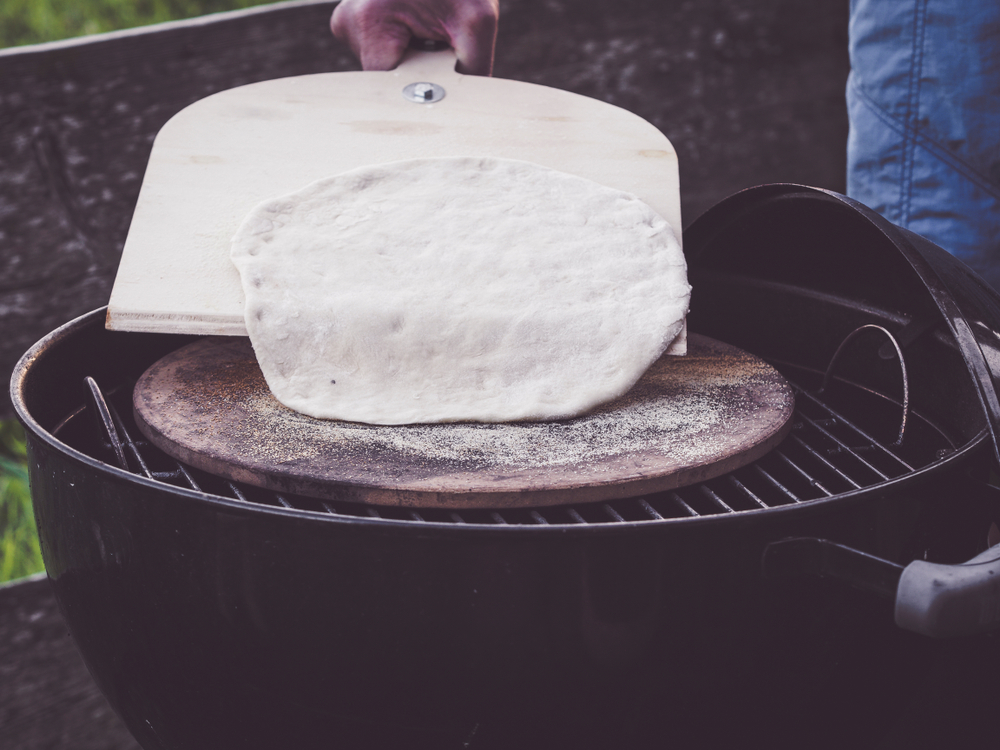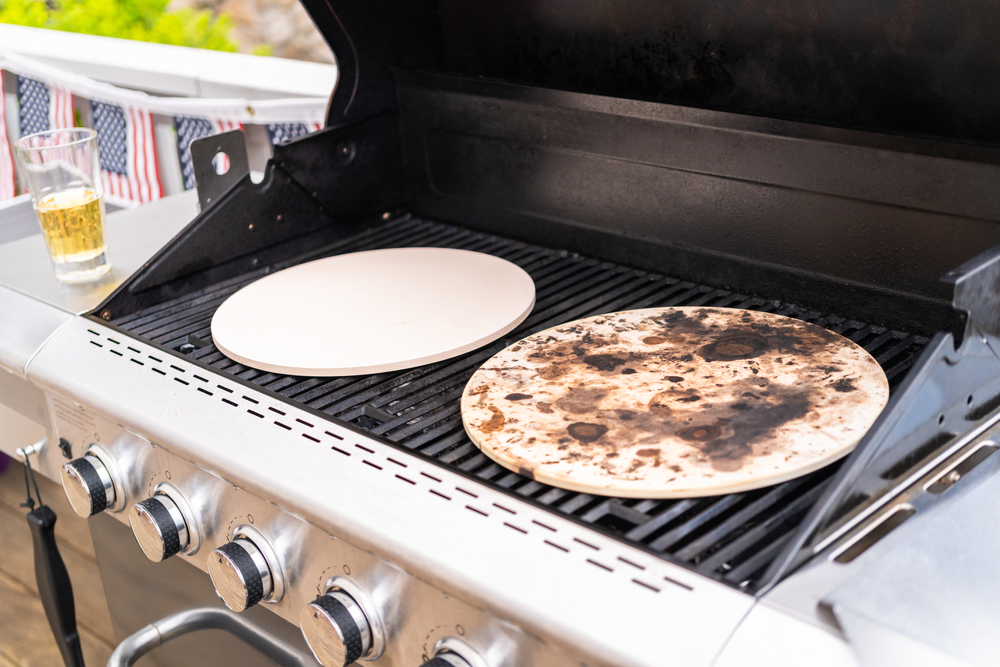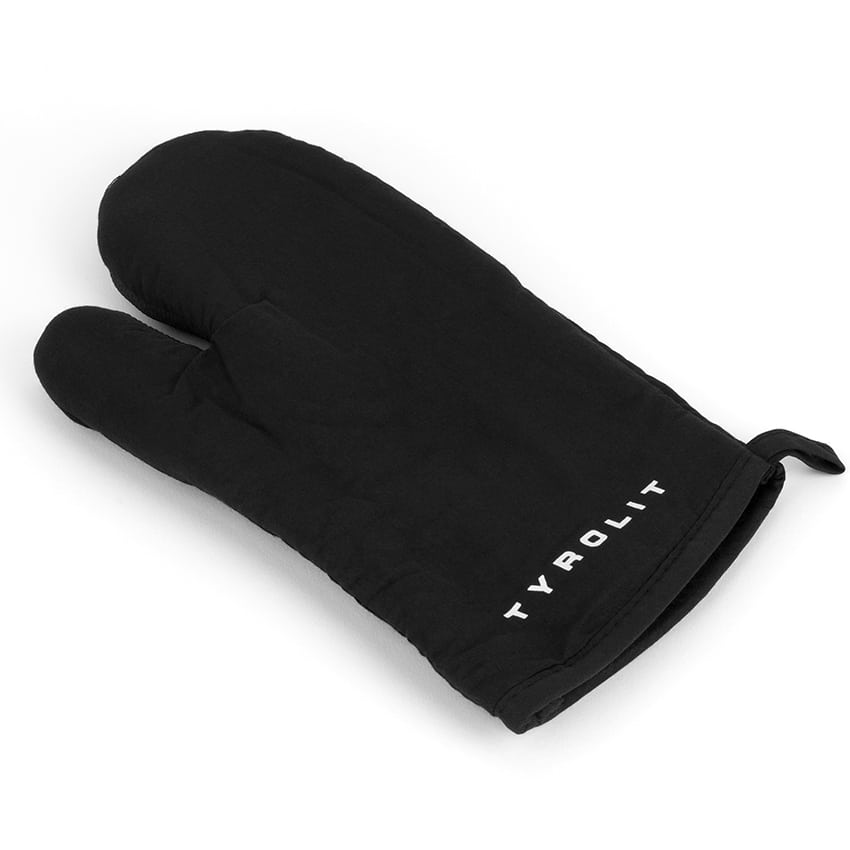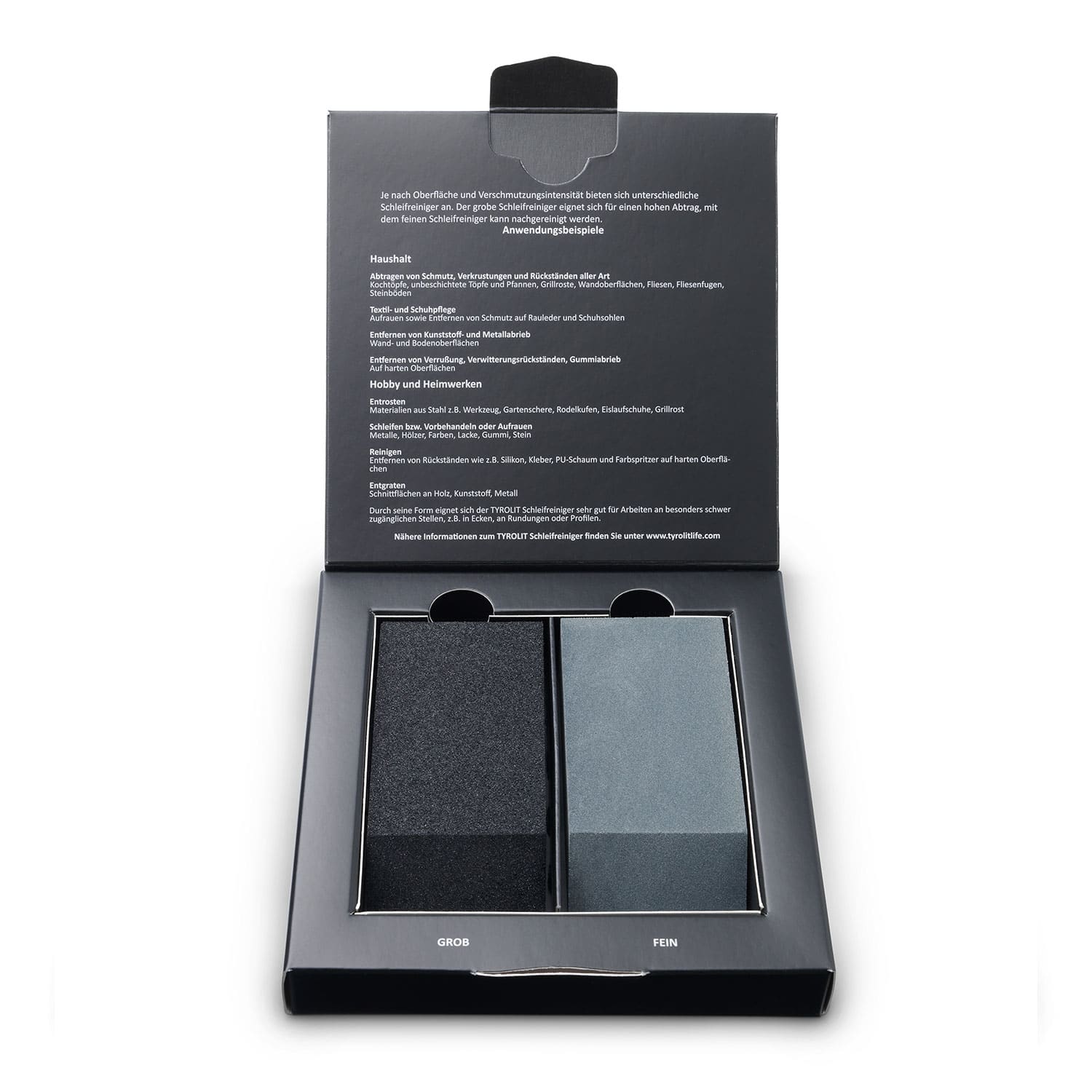Pizza Stone – All Facts on Materials, Application, and Maintenance
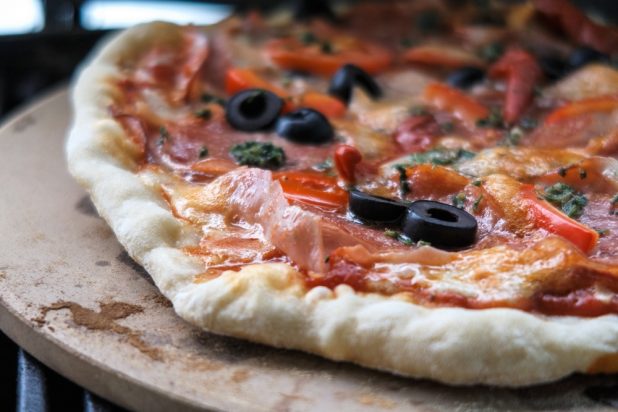
The pizza stone has become a must-have in countless kitchens. Because to make a crispy and perfect pizza at home, you need more than just a good pizza dough and delicious ingredients. It is about controlled temperature and moisture release in the oven.
And this is where the pizza stone, for example from fireclay or cordierite, comes into play! From classic versions to innovative products such as the Tyrolit pizza stone, which allows particularly efficient heat absorption with its waffle structure at the bottom: pizza enjoyment becomes a true experience.
In this post, we’ll take a look at interesting facts about this kitchen helper – one thing in advance: the pizza stone is far more versatile than you might think.
What does a pizza stone do? An upgrade for the oven!
A pizza stone is the secret to a perfect pizza with a crispy bottom that comes close to the taste of a stone oven pizza. This kitchen utensil tolerates high temperatures and ensures that the heat is evenly distributed.
The pizza stone has advantages such as an even heat distribution, which bakes the dough crispy and cooks the topping perfectly. This makes it easy for you to create a perfect pizza at home, with a crispy pizza base like from the stone oven.
But the pizza stone in the oven – and on the grill, by the way – can do much more. In the following sections, you will learn when the pizza stone makes sense and how to use this versatile tool for other delicious dishes.
Pizza stones are usually made of fireclay or cordierite
Pizza stones are usually made from a single type of material – the most common being chamotte and cordierite. Some baking stones also incorporate natural stone or soapstone, though soapstone is more commonly used for cooking fish.
Fireclay is a refractory material capable of withstanding extremely high temperatures. It ensures that the pizza dough is evenly baked and gives the pizza a crispy bottom.
Cordierite is also a popular material among pizza stone manufacturers, which is sometimes also glazed. Cordierite pizza stones, like fireclay stones, absorb excess moisture and make for a deliciously crispy dough. The material has a less pronounced porosity, so the cordierite stone is often considered more robust and easier to clean.
Regarding shape, you can find pizza stones in either rectangular or round forms. Rectangular pizza stones often fit better in the oven, given its typically square shape. Round pizza stones, on the other hand, provide just the right area for crafting a delectable pizza akin to one from an Italian pizzeria. Moreover, if the pizza stone is round, it's particularly well-suited for use in another setting – more on that later. Before its first use, you should season your pizza stone. This process benefits the lifespan of your pizza stone and can enhance the preparation of your pizzas and baked goods.
Cordierite pizza stone – All details about the material
In this article, we delve into the world of pizza baking, with an emphasis on the traditional pizza stone that forms the basis for crispy, delicious pizzas. You will also learn about the benefits of cordierite.
What You Can Do with a Pizza Stone
Despite its name suggesting otherwise, one can't help but be surprised at the list of things that can be done on a pizza stone
Pizza, focaccia and tarte flambée from the pizza stone
Sure – the pizza stone is perfect for baking pizzas just like from a pizza oven. But beyond classic pizzas, you can also create tarte flambée on it – a delightful alternative. The uniform distribution of heat ensures a crispy tarte flambée base.
But that's not all. A pizza stone is perfect for preparing crispy focaccia – a typical Italian bread garnished with olive oil, salt, and herbs.
The pizza stone, on the other hand, is less suitable for frozen pizza, which is usually too moist and may burn at the bottom even before it is really cooked.
Bread, flatbreads, sandwiches, and even sweets on the pizza stone
The pizza stone is also perfectly suited for bread and other baked goods. It functions like a bread baking stone and lends a professional quality to your baked goods. Thus, you're not limited to baking delicious baguettes but can also prepare various sandwiches and flatbreads. This also opens the door to making homemade kebabs or Dürüm.
You can even prepare sweet pastries on the pizza stone. So, why not give your next yeast braid or a fruity fruit tart that special touch with the pizza stone?
5 Tips for the Correct Use of a Pizza Stone
We would like to clear up all questions and uncertainties about the optimal use of the pizza stone with our 5 tips. After this pizza stone masterclass, nothing stands in the way of your pizza enjoyment!
Heat the pizza stone properly and prevent sticking
How long a pizza stone needs to preheat depends partly on its thickness. As a general rule, the thicker the stone, the longer it takes to reach the desired temperature, typically between 30 and 45 minutes. Once the stone is preheated, it also helps to prevent the pizza from sticking. Since using baking paper on the pizza stone is usually not advisable, working with sufficient heat (and sprinkling flour or semolina) is recommended.
Thin pizza stones (approx. 1 cm) heat up faster and are ideal for quick enjoyment. Thick pizza stones, on the other hand (3 cm and more) take more time to heat up, but offer more even heat storage and distribution. This is particularly advantageous when preparing bread, as the heat has to be released over a longer period of time. Which is the best pizza stone for you also depends on what you want to bake with it.
To make heating up the pizza stone more efficient, Tyrolit Life has provided its pizza stones with a waffle structure on the bottom. This allows heat to be absorbed effectively, so that the stone is ready for use after about 30 minutes.
Why is my pizza sticking to the pizza stone?
In this post, we embark on a troubleshooting journey to uncover the root causes of this annoyance. To give you a heads up – there are three common reasons why a pizza might stick to the pizza stone during its use. Read on to find out more!
Baking pizza on the pizza stone – in 6 steps
Preparing a delicious pizza on a pizza stone is straightforward and quick to learn. Here is a step-by-step guide to baking on the pizza stone that will show you how to properly apply the pizza stone and prepare a delicious pizza on it.
Step 1: Preparing the pizza stone
Ensure the pizza stone is clean and dry. Place it on a cold rack on the lower shelf of the oven.
Step 2: Preheat the pizza stone
Preheat your oven to the highest possible temperature with the pizza stone. This may take a few minutes depending on the device, but the high temperature is crucial for a crispy crust.
Step 3: Prepare pizza dough
Stretch your pizza dough on a floured surface. Make sure the dough is thin enough to bake evenly, but not too thin to hold the toppings.
Step 4: Pizza topping
Place the prepared pizza dough on a pizza peel that's been dusted with some flour or semolina to prevent sticking. Then, top the pizza with tomato sauce, mozzarella, and your favorite ingredients to your taste.
Step 5: Bake on the pizza stone
Gently slide the pizza from the shovel onto the hot pizza stone. Be careful not to burn yourself. Close the oven and bake the pizza over high heat. The baking time is usually only a few minutes, as the pizza stone transfers the heat very efficiently.
Step 6: Enjoy
Once the pizza is golden brown and crispy, take it off the pizza stone with a pizza peel. Then cut it into pieces and enjoy your homemade, delicious pizza.
As you can see, baking on a pizza stone is not only easy, but also fast. In just a few minutes, you can make a delicious pizza with a perfect crispy crust. Try it out and discover the joy of homemade pizza enjoyment!
The Pizza Peel – How to Transfer Your Pizza to the Stone
Anyone looking to bake the perfect pizza on a pizza stone will need an essential tool: the pizza peel. The pizza peel helps you transfer the pizza onto the pizza stone.
A high-quality pizza peel is often made of wood or stainless steel and is essential for every pizza enthusiast. With Tyrolit Life, along with the oven mitt, your pizza stone set includes a wooden pizza peel to make sliding your pizza effortless.
If you don't have a pizza peel at your disposal, you can use a cutting board or an inverted baking sheet instead. With the dough placed on parchment paper and generously dusted with flour or semolina underneath, you can transfer the pizza onto the stone even without a pizza peel. Just make sure not to bake the parchment paper along with it.
How do I get the pizza onto the pizza stone?
In this post, you will learn important tips and tricks on how to get your homemade pizza on the pizza stone. Find out more now!
The pizza stone is also fun on the grill
The grill is another venue where the pizza stone can be utilized, bringing about a variety of delicacies. While the pizza stone for the grill can be rectangular, round pizza stones are especially recommended for use on a kettle grill, yielding excellent results.
Whether you use a kettle grill, gas grill or classic charcoal grill, the pizza stone made of refractory materials (whether chamottic stone or cordierite) will transform your grill into an outdoor pizza oven.
Because of its fire resistance, the pizza stone can easily withstand the necessary high temperatures to perfectly bake the pizza, both on a gas grill and a charcoal grill. However, it's important for the grill to have a lid in order to reach sufficiently high temperatures and not rely solely on bottom heat.
With a pizza stone on the grill, you can not only prepare pizza, but also create other delicious dishes and take your barbecue fun to a new level. Whether you want to grill meat, vegetables or even desserts, the pizza stone opens up a wide range of possibilities.
To efficiently utilize the valuable space on the grill grate, Tyrolit Life has developed the FLEX stone. This three-piece pizza stone can not only be used whole but also in segments on the grill, allowing for smaller dishes without taking up the entire grate.
* each pizza stone contains a wooden pizza shovel and an oven mitt (for the right hand).
Clean the pizza stone properly – less is more
Cleaning the pizza stone is crucial to extend its lifespan and ensure it delivers delicious results. When it comes to cleaning, the rule is: less is more.
- Allow the pizza stone to cool after use, but avoid immersing it in water or putting it in the dishwasher. Too much moisture can damage the stone.
- Remove coarse dirt with a ceramic hob scraper or a brush. Never use soap or detergent, as they can penetrate the stone.
- Store the pizza stone in a dry place to prevent mold from forming. Avoid dripping oil or grease onto the stone, as this can lead to unwanted deposits.
Proper cleaning and care will ensure that your pizza stone can provide you with many delicious pizzas and other treats. Remember that the stone will develop a patina over time, but it is perfectly normal and not a cause for concern.
Cleaning Your Pizza Stone – 7 Tips for Keeping It Clean
How do you clean a pizza stone? Fortunately, it's not at all difficult to get the pizza stone clean again. The principle is: less is more! To ensure the few steps needed for cleaning the pizza stone are effectively applied, we have put together 7 useful tips for you here.
Pizza Stone with Waffle Texture – An Innovation by Tyrolit Life
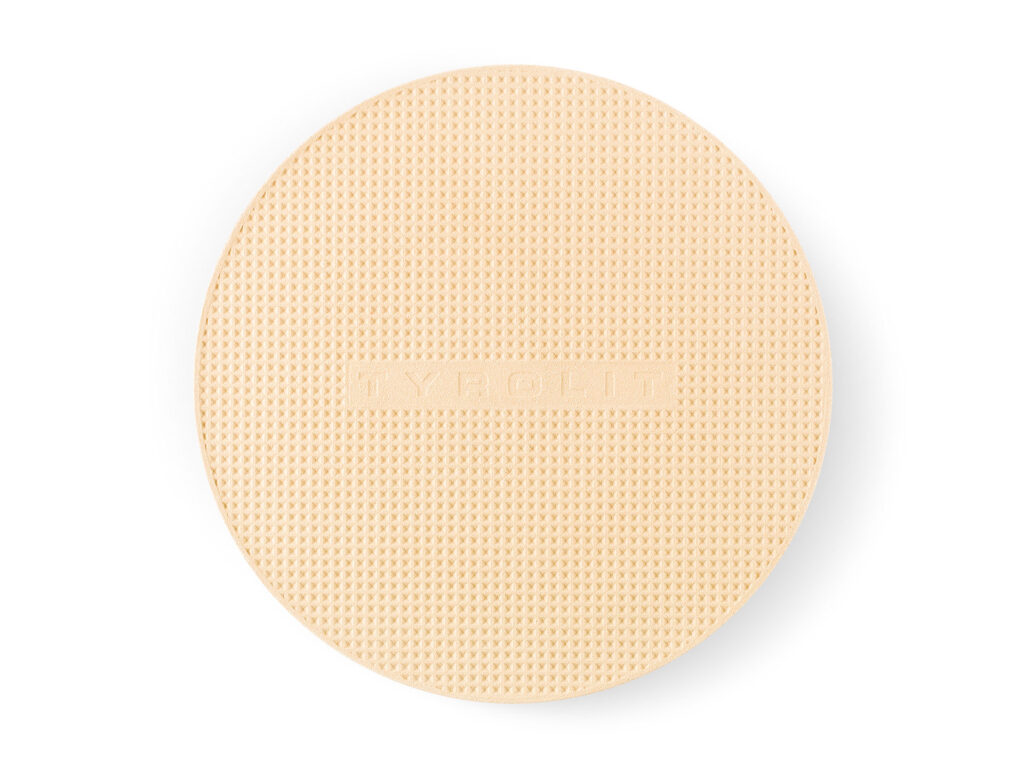
The Tyrolit Life pizza stone is made of high-quality cordierite and promises a unique baking experience. With its dimensions of 330 x 10 mm and 100% food-safe cordierite, it takes your culinary creations to a new level. The secret of its success lies in its innovative waffle structure on the underside, which ensures improved heat absorption and rapid heating.
Due to the stored heat, the dough bakes through in the shortest possible time, and the stone releases the temperature evenly to the baked goods. It absorbs excess moisture, resulting in a deliciously crispy dough with juicy toppings. The pizza stone is not only ideal for pizza, but also for bread and pastries.
But that's not all. Tyrolit Life also offers the 3-piece pizza stone Flex, which can be assembled as required. The innovative wafer structure is also present here and enables a wide range of applications.
Together with the enclosed pizza shovel, you can create baking results at an unprecedented level with a pizza stone from Tyrolit Life.

